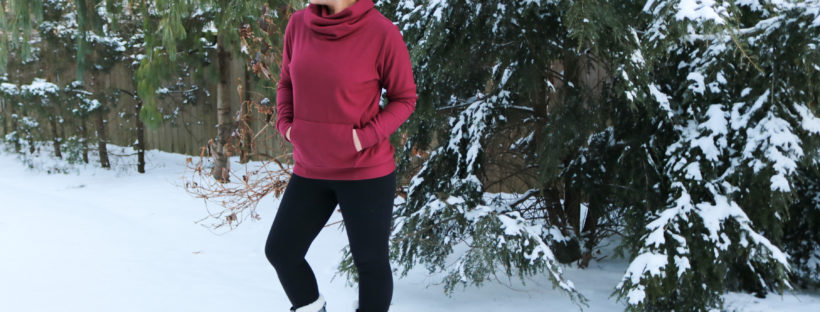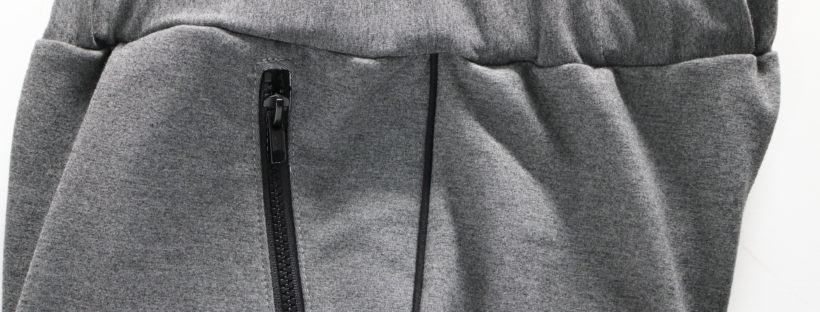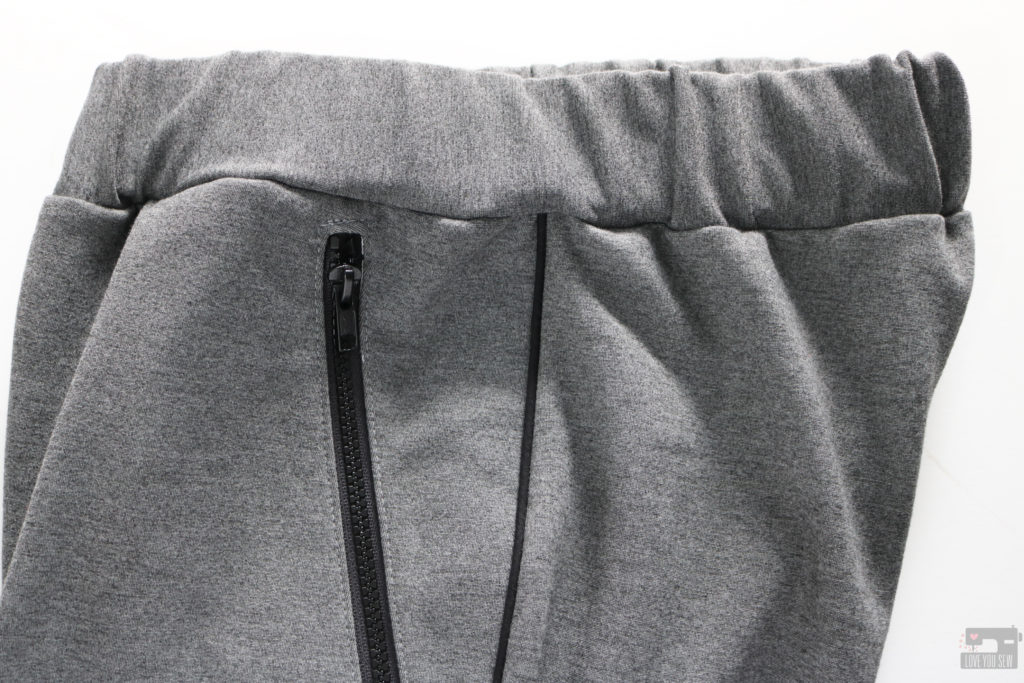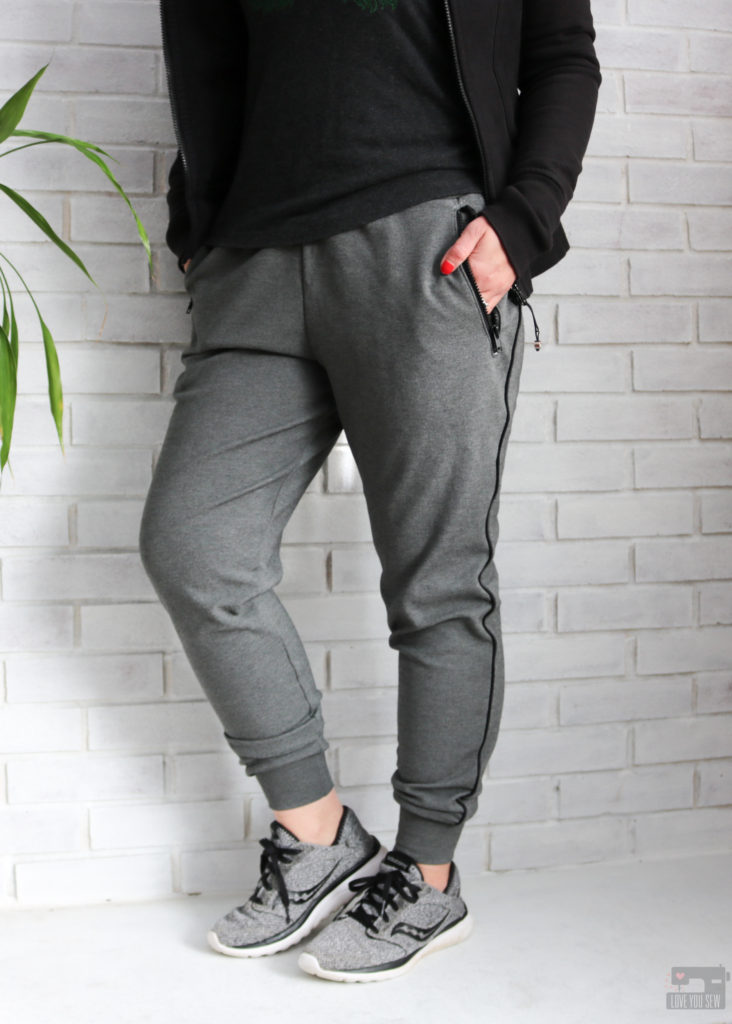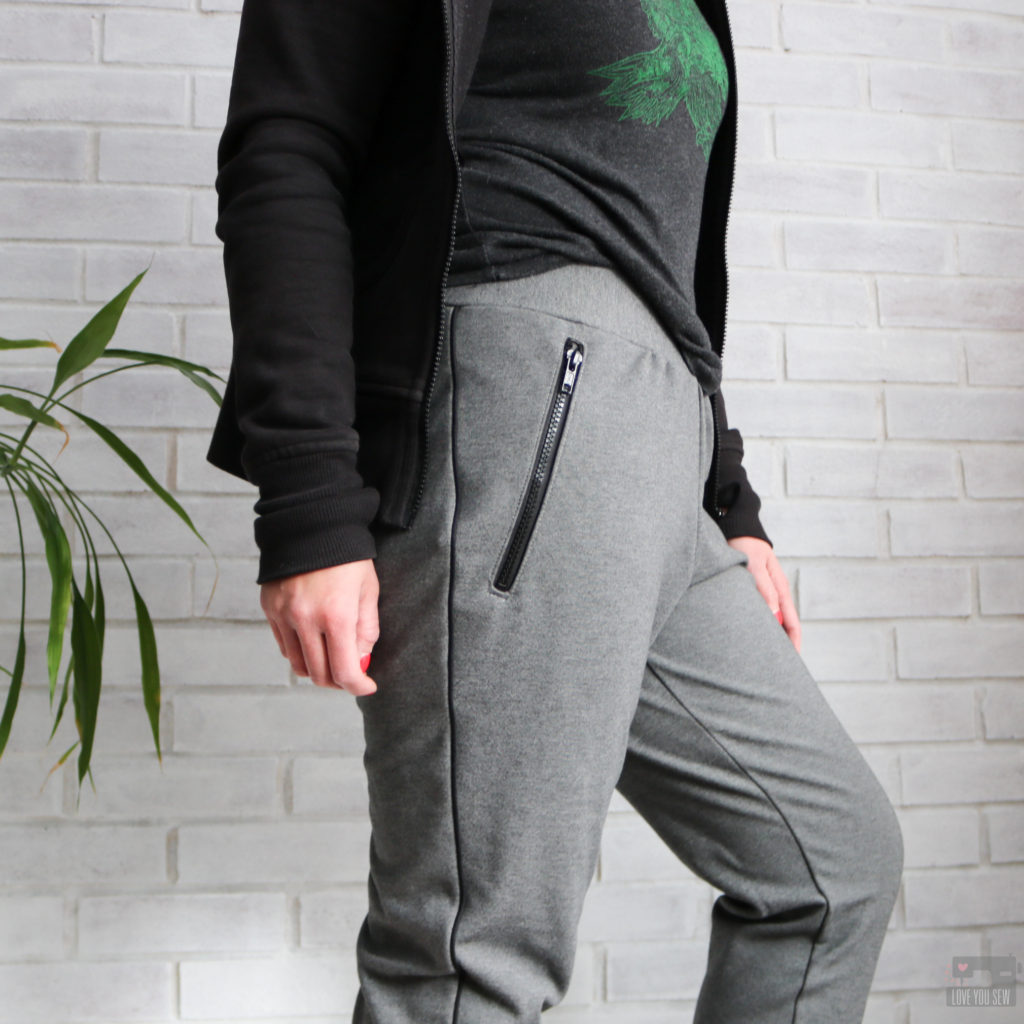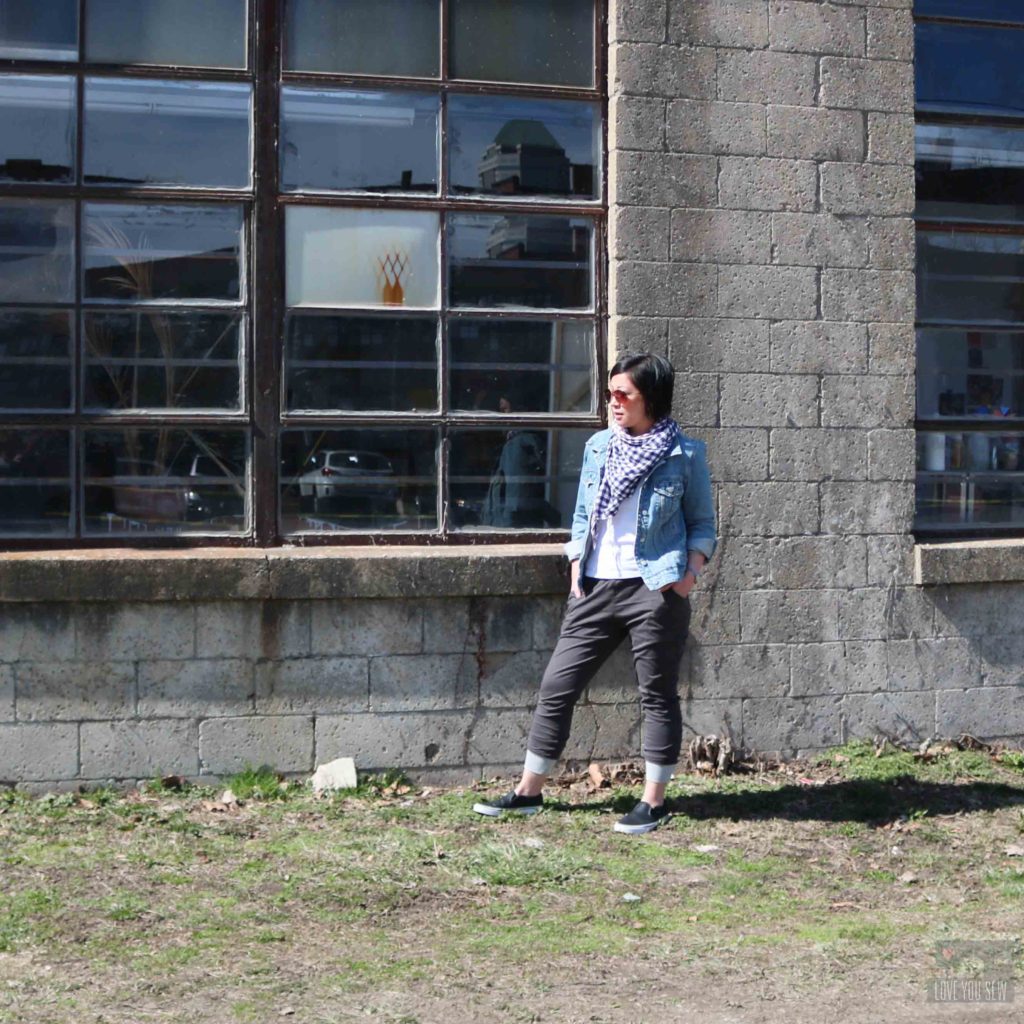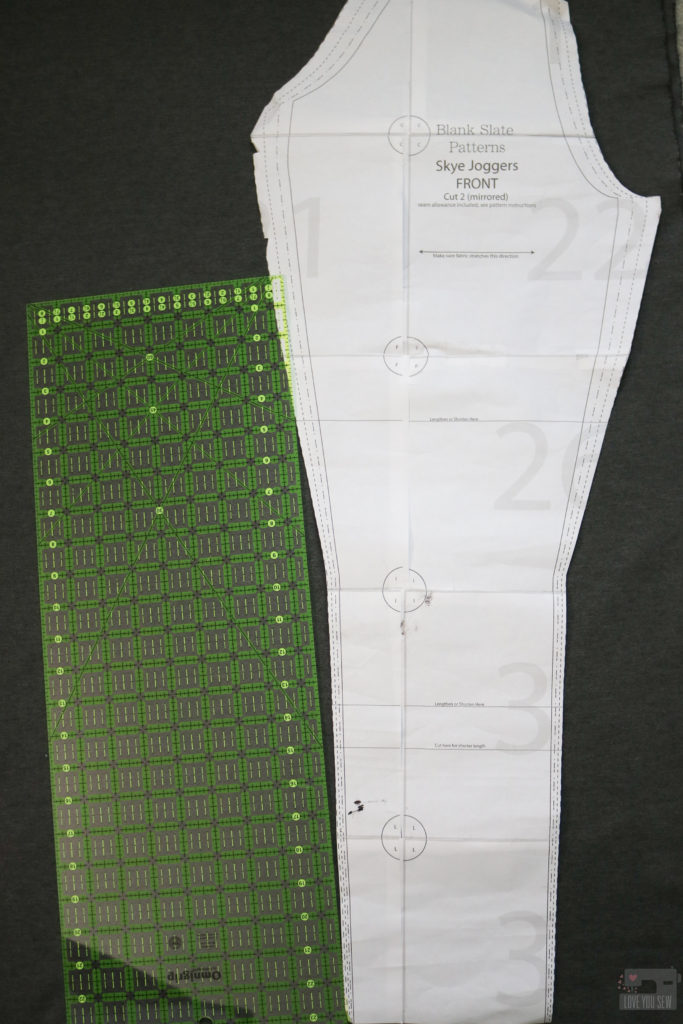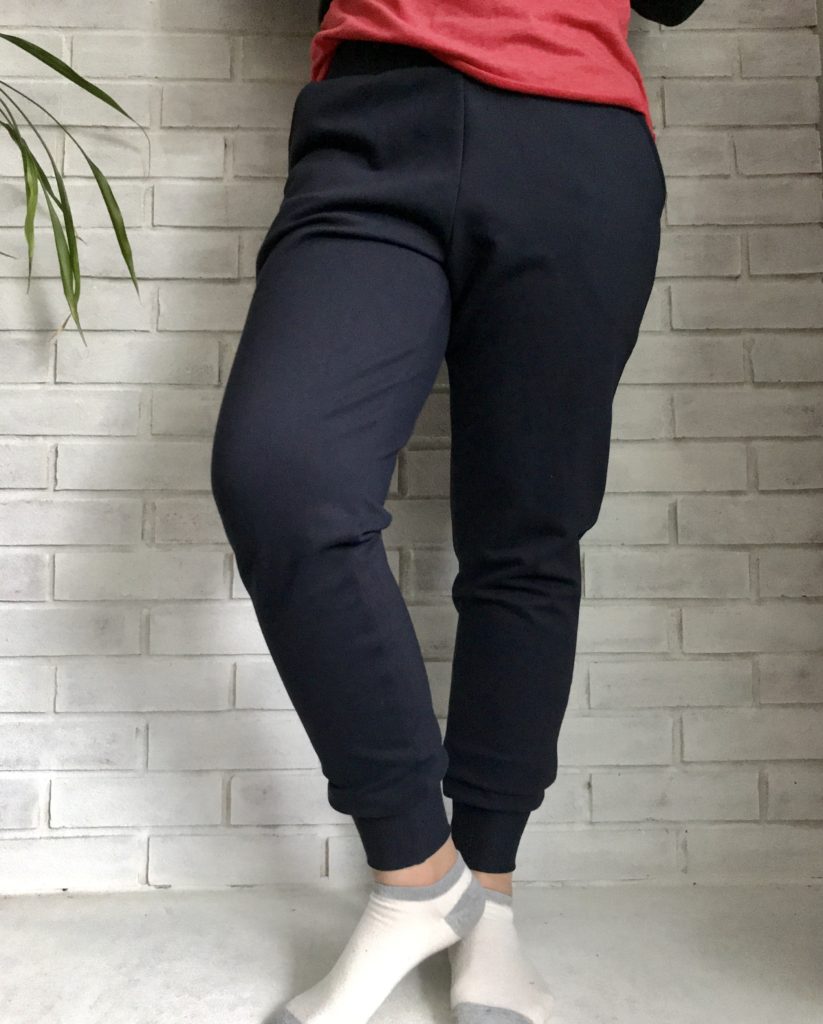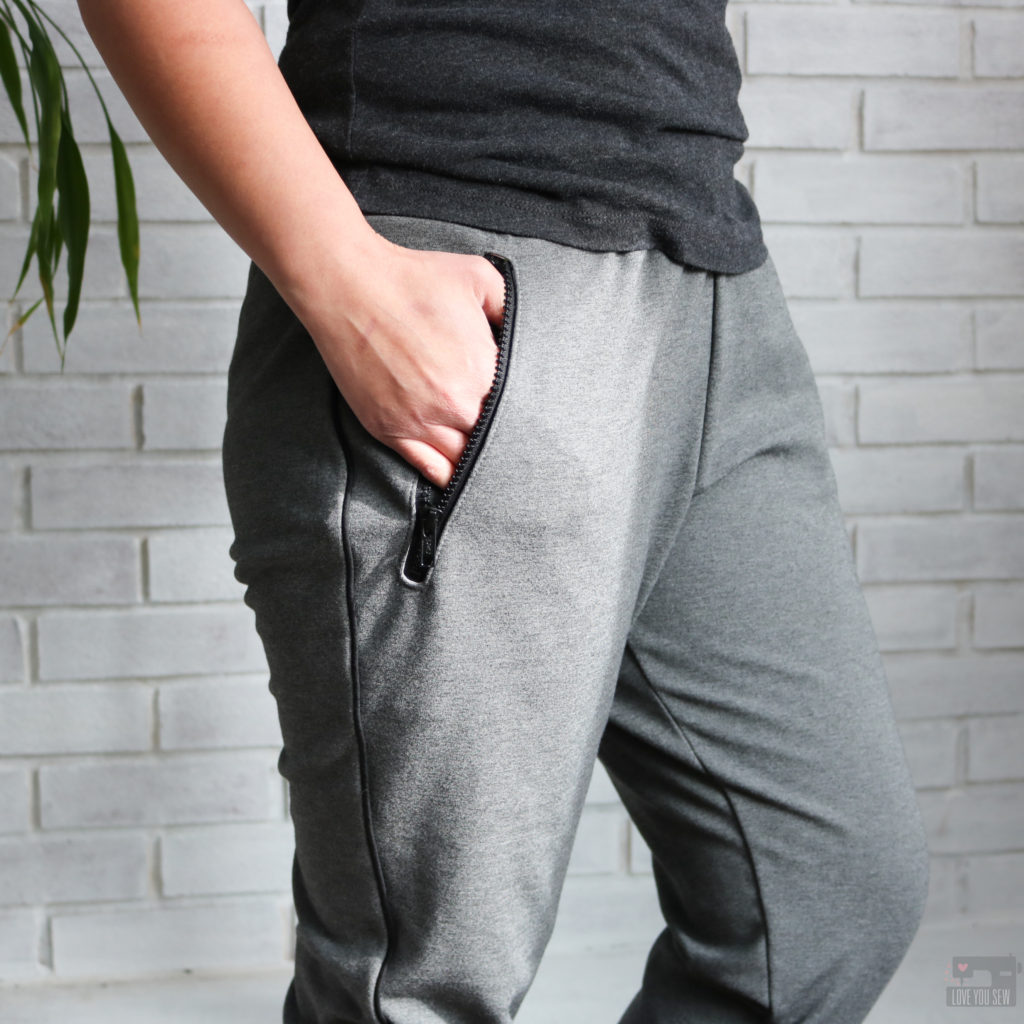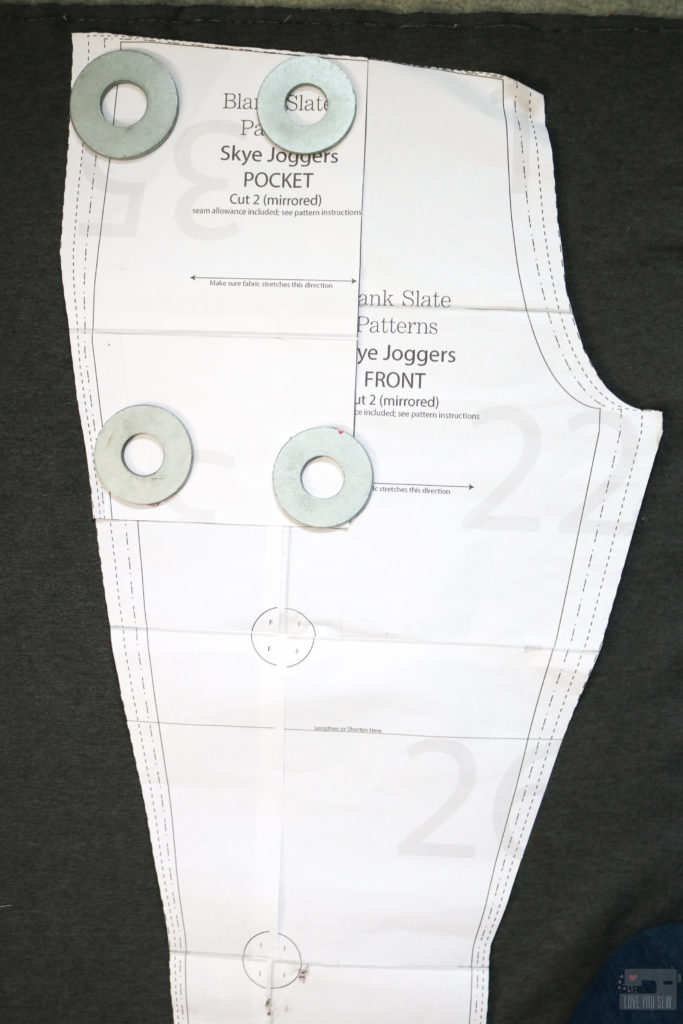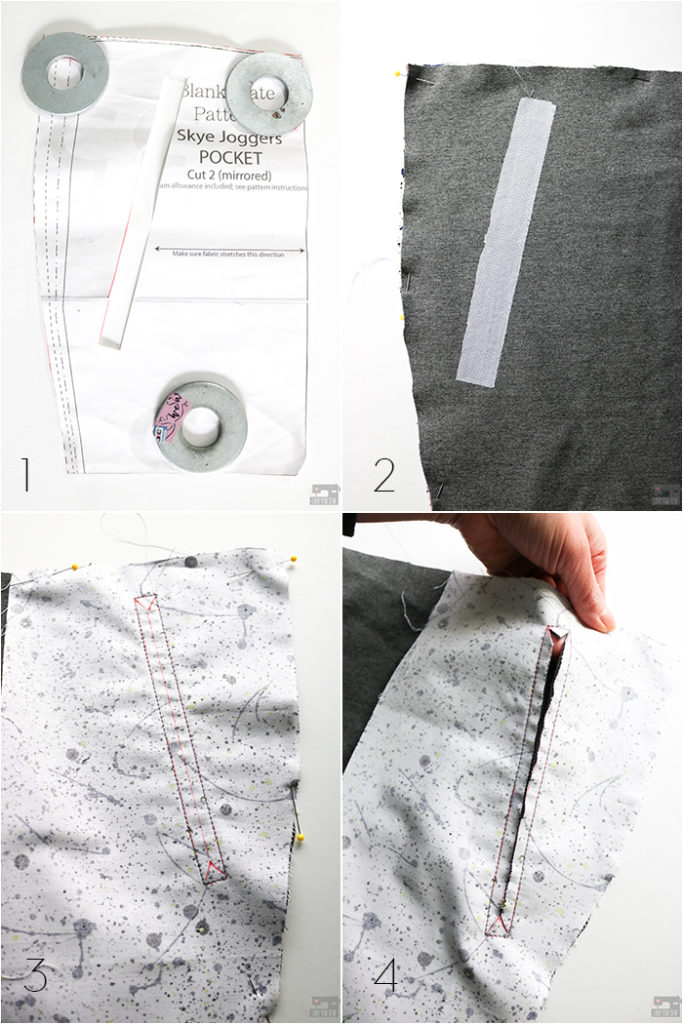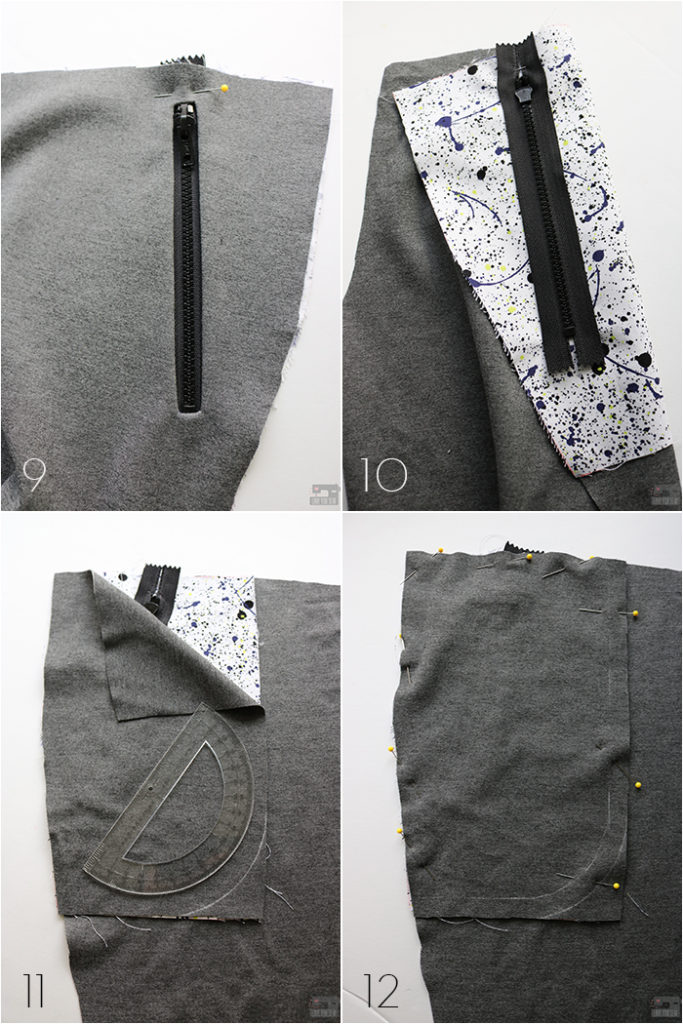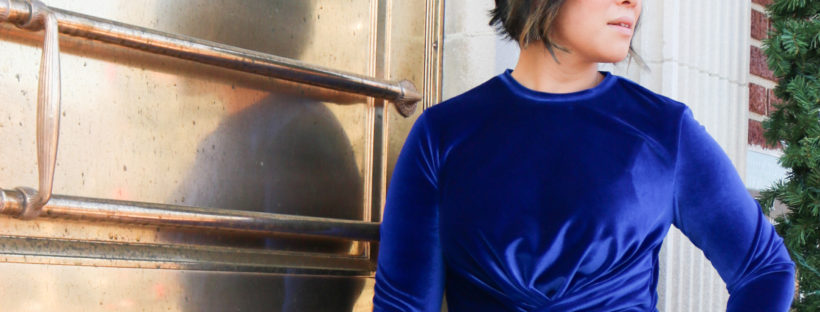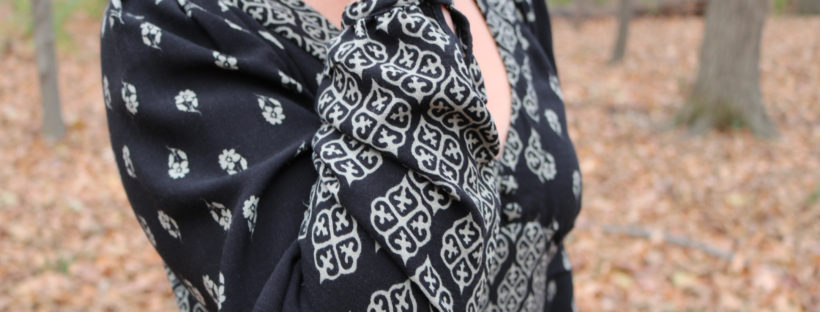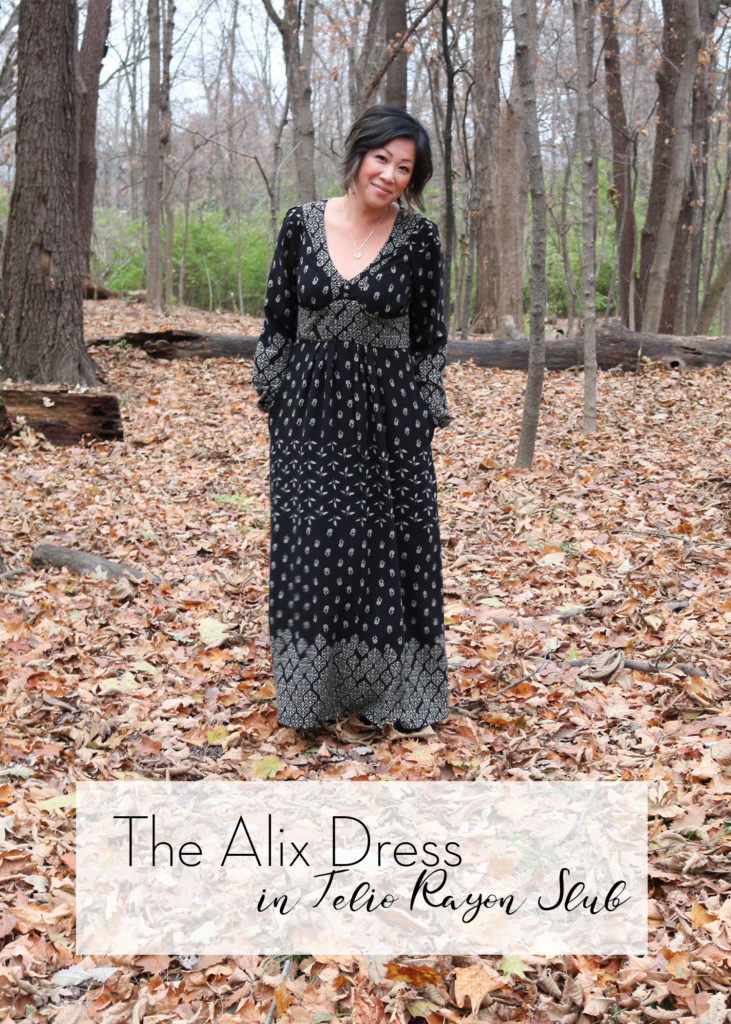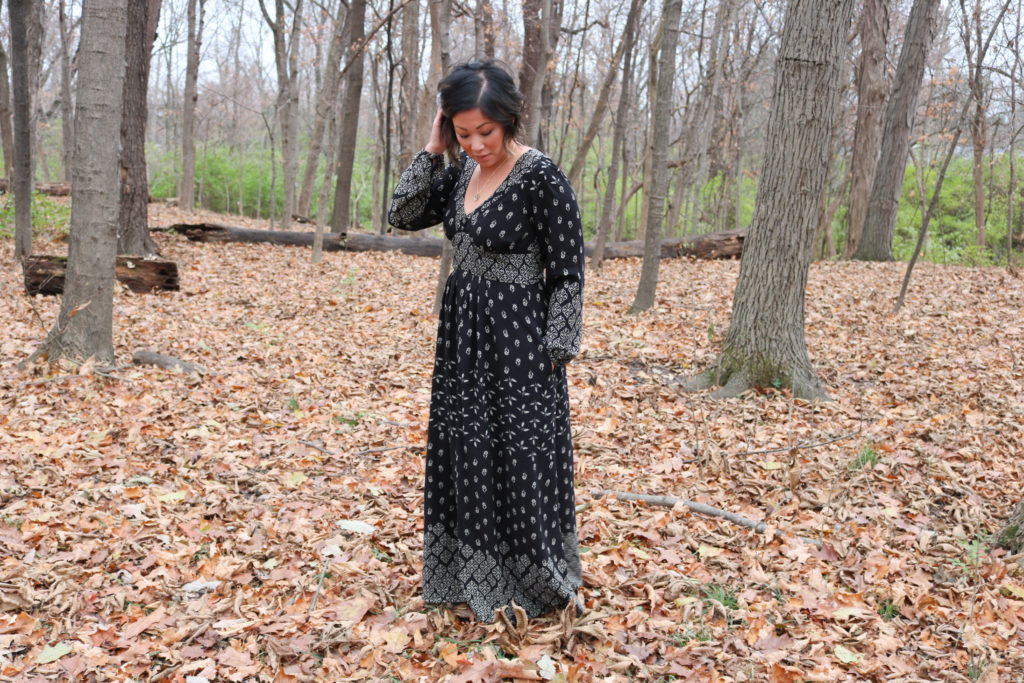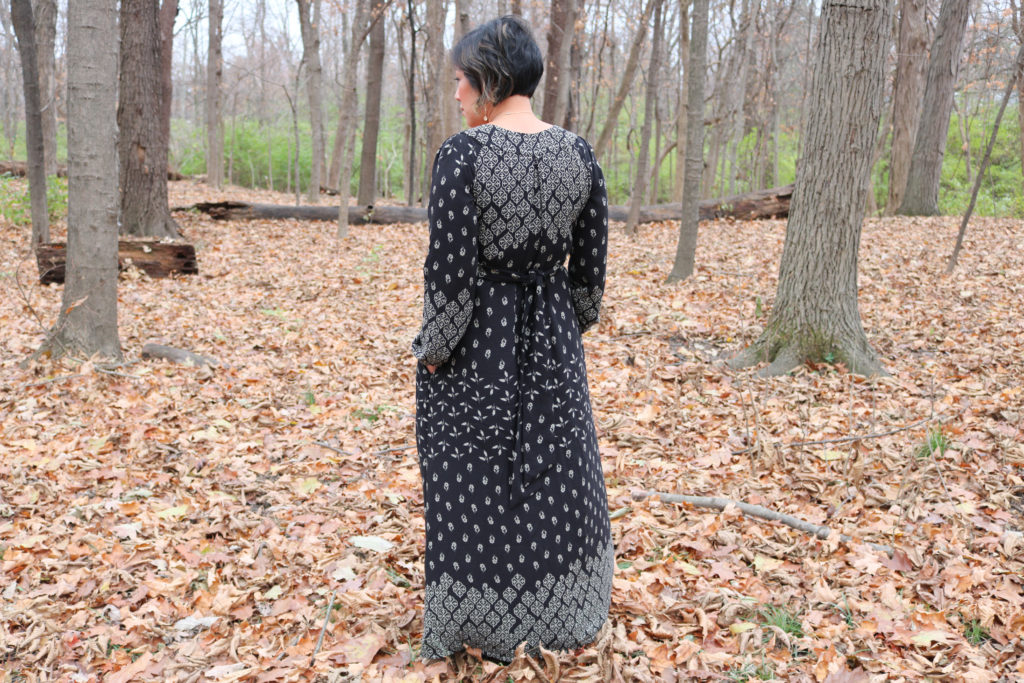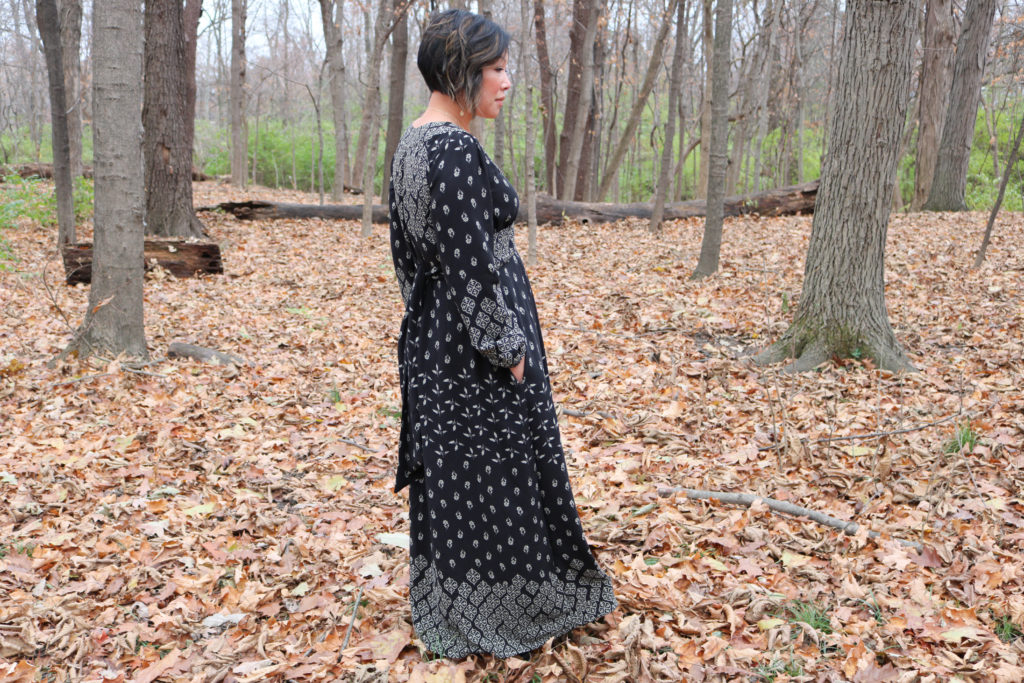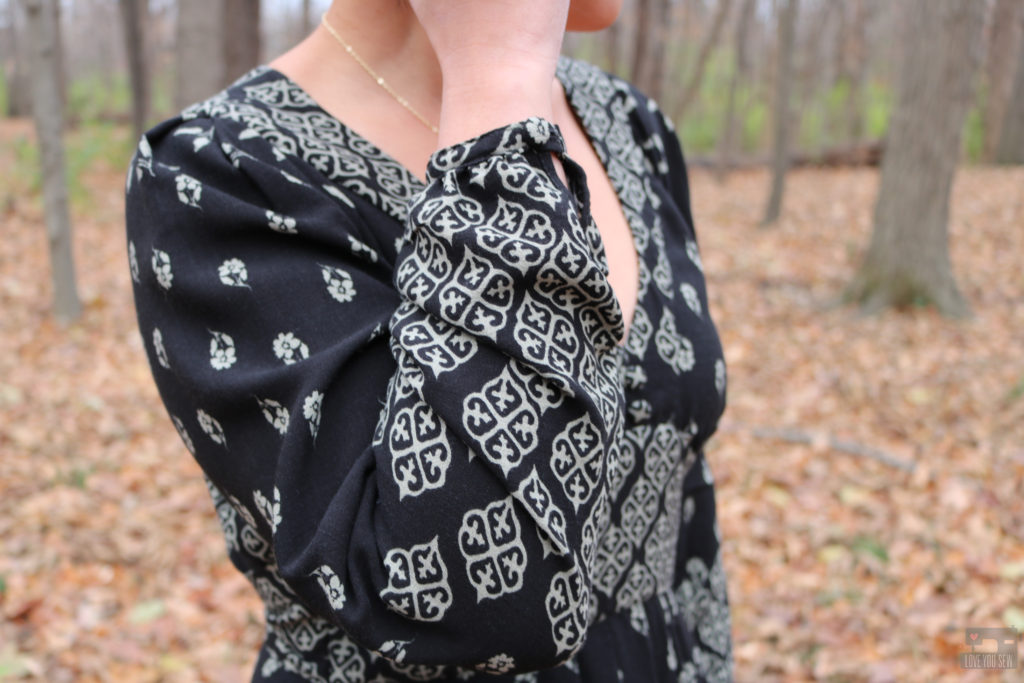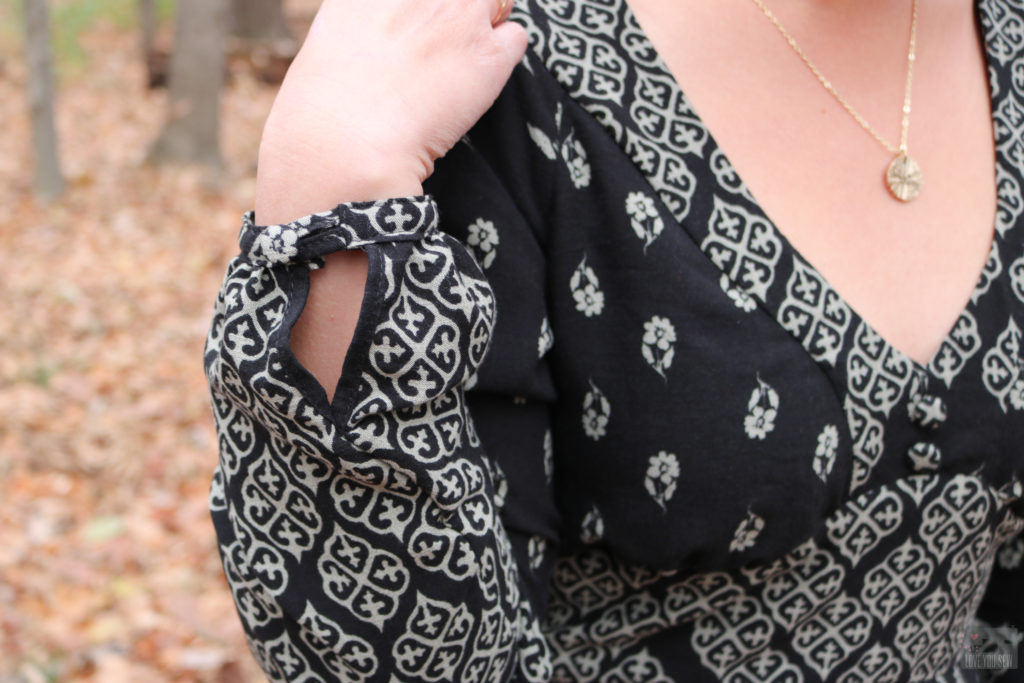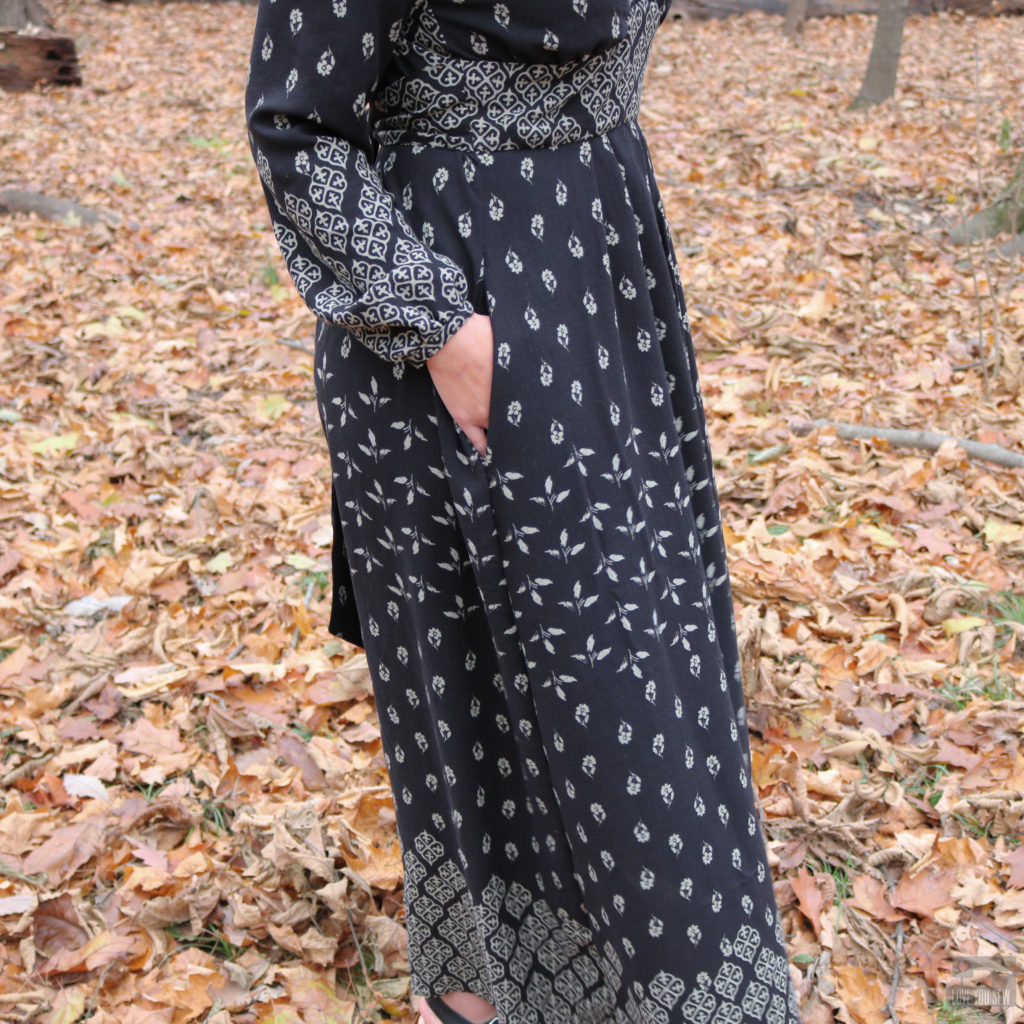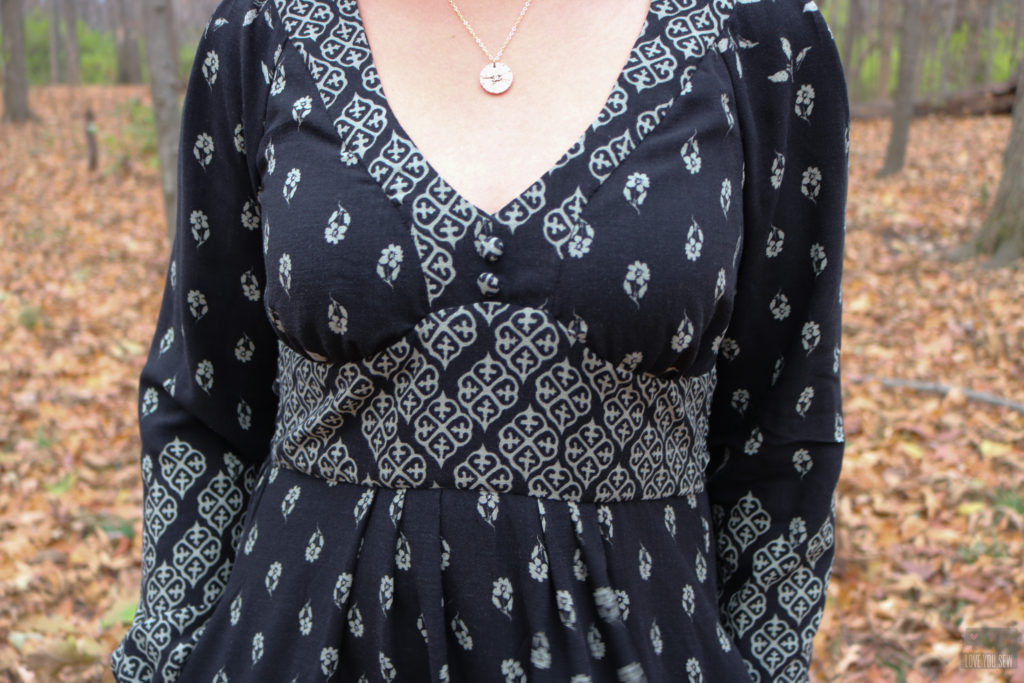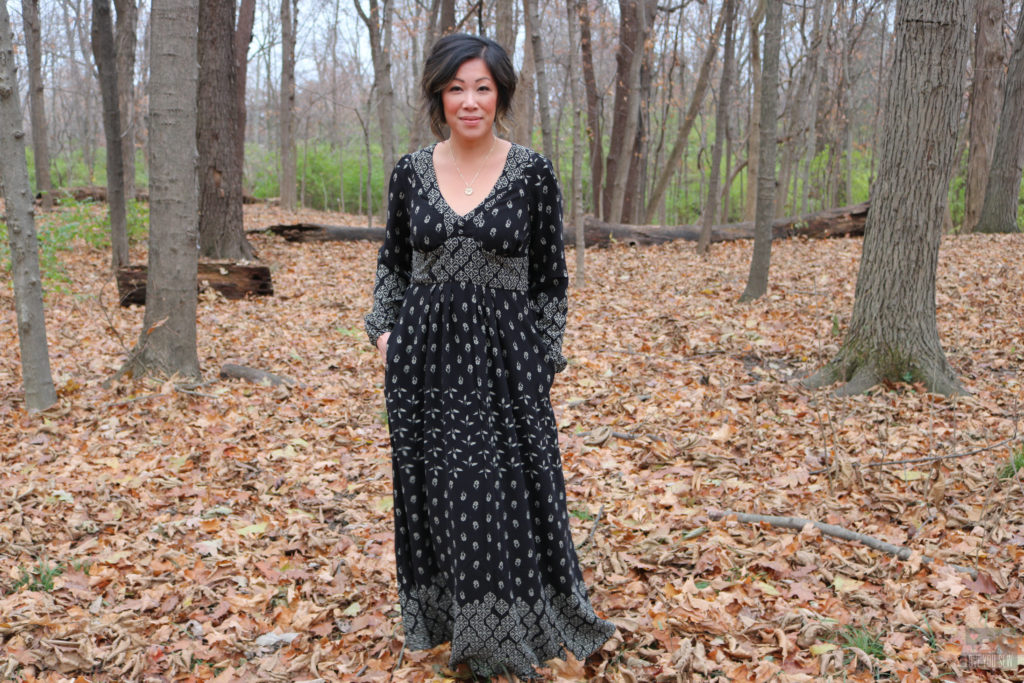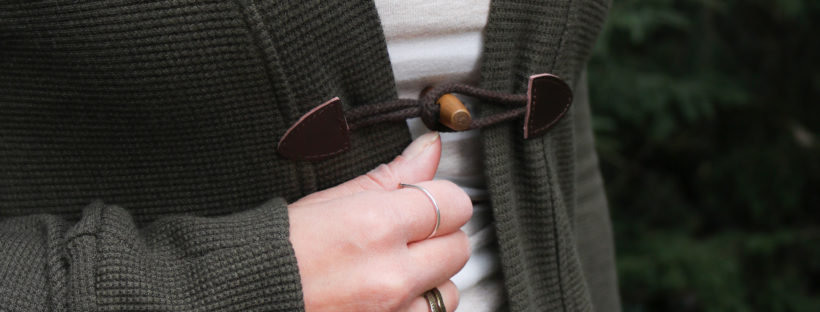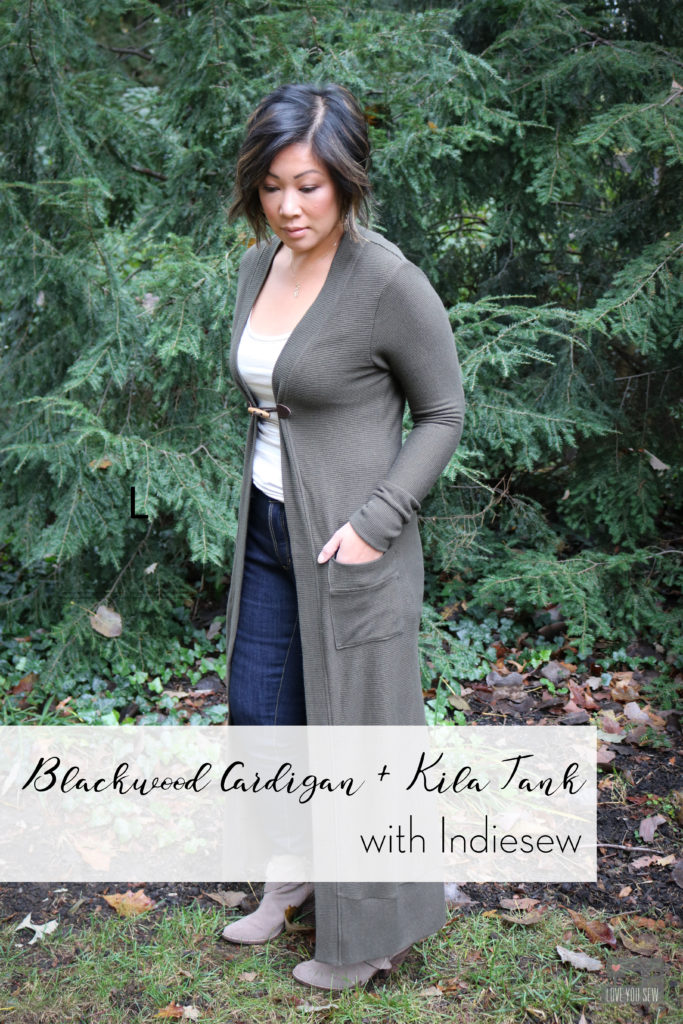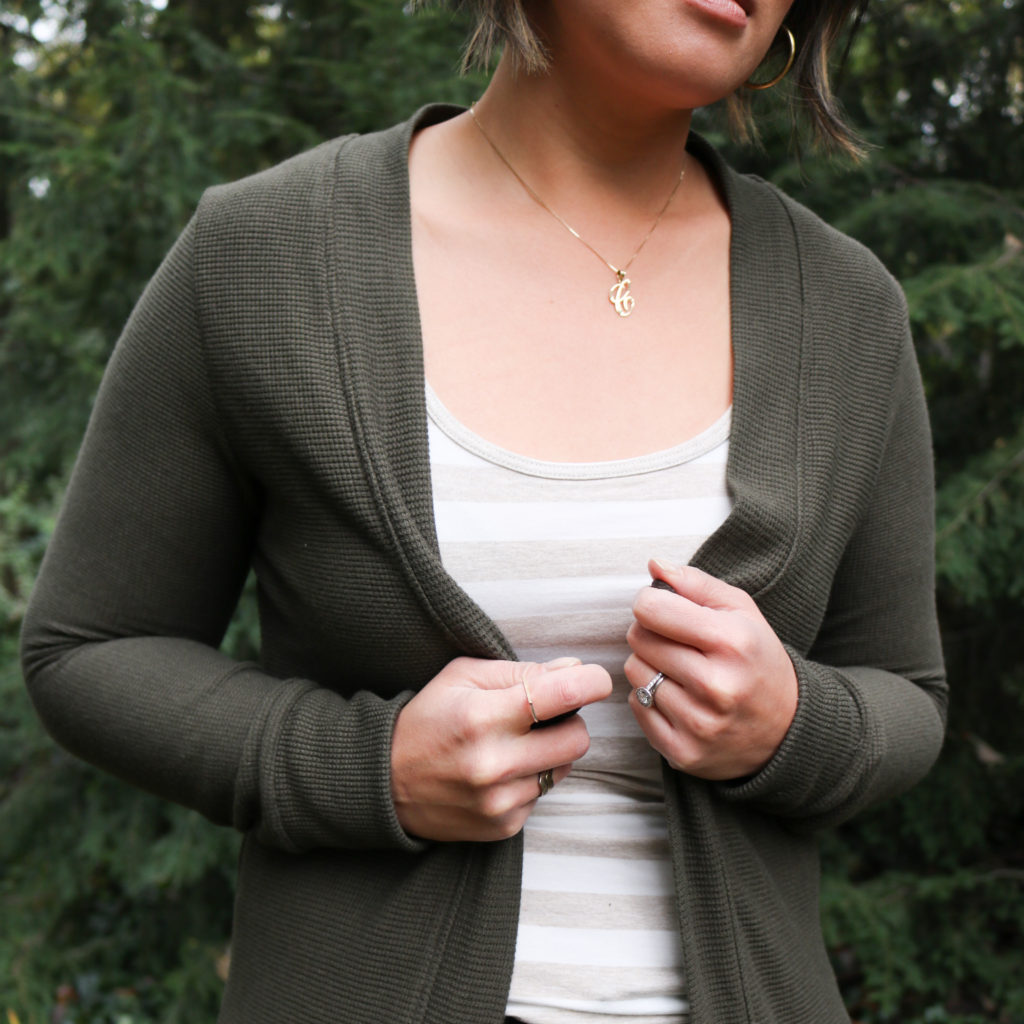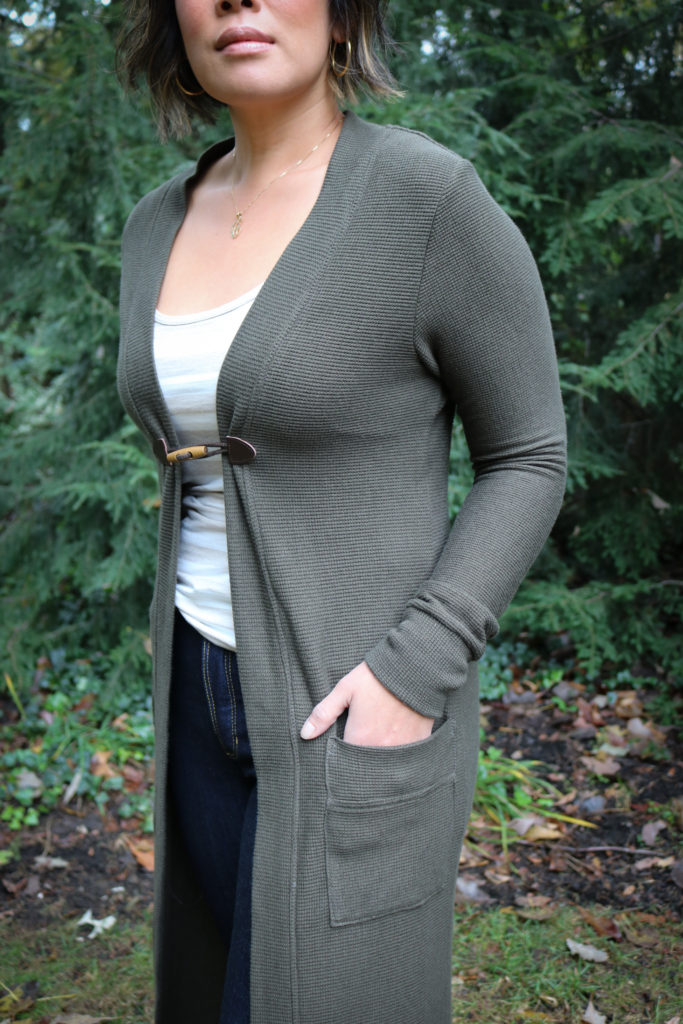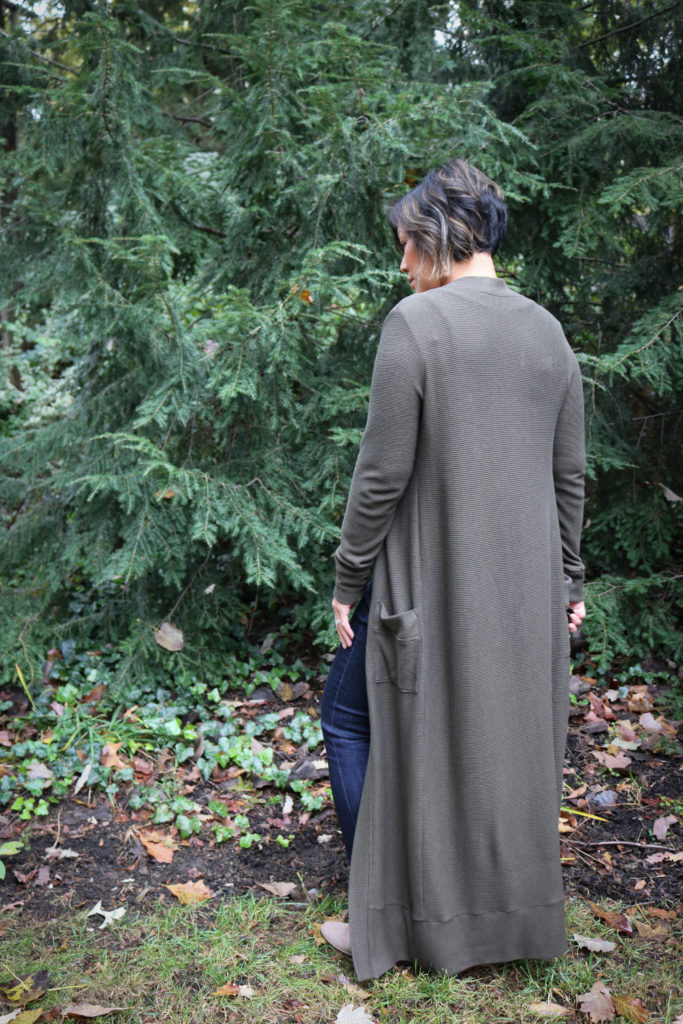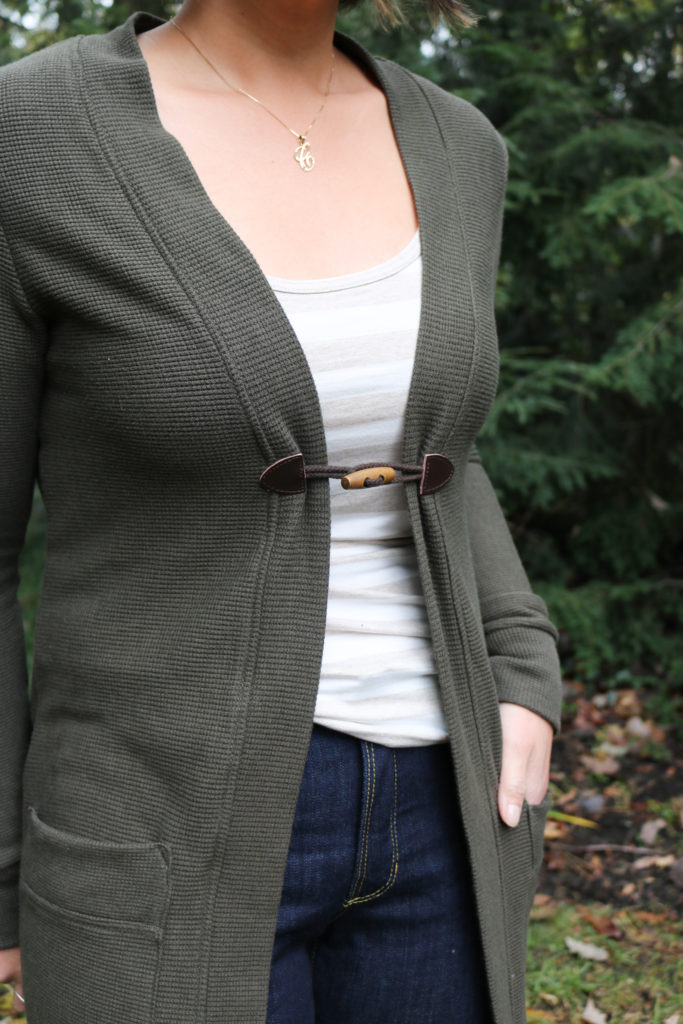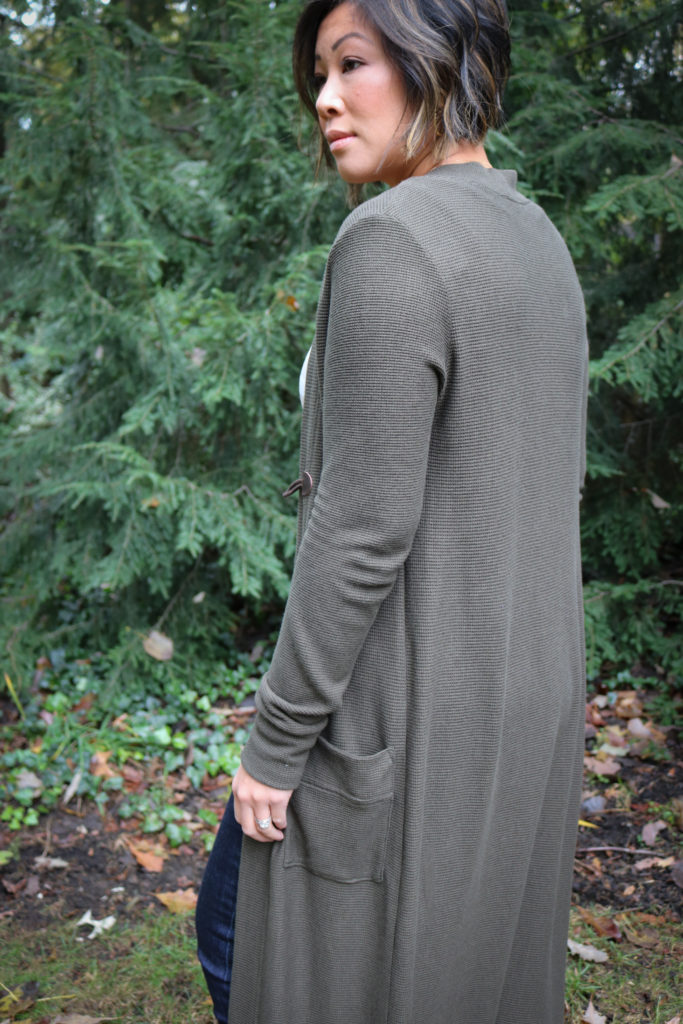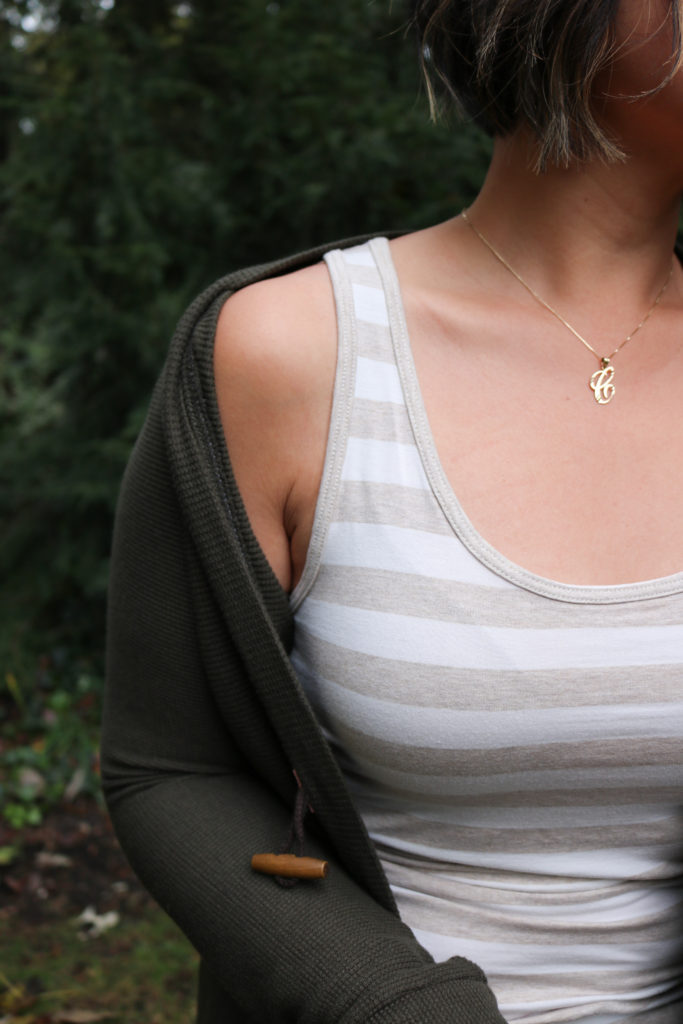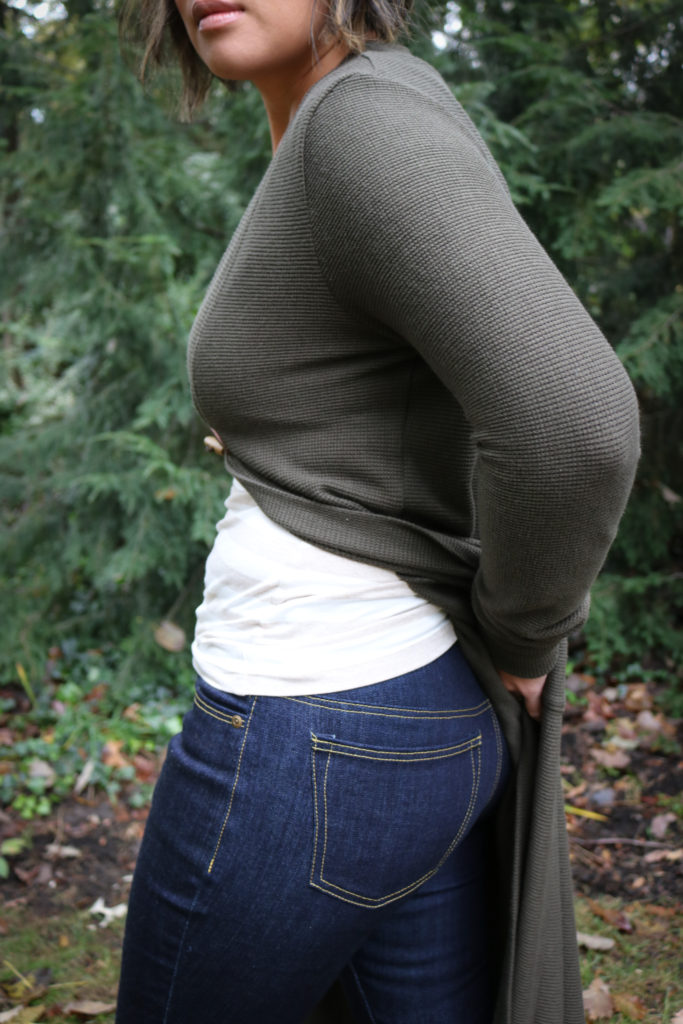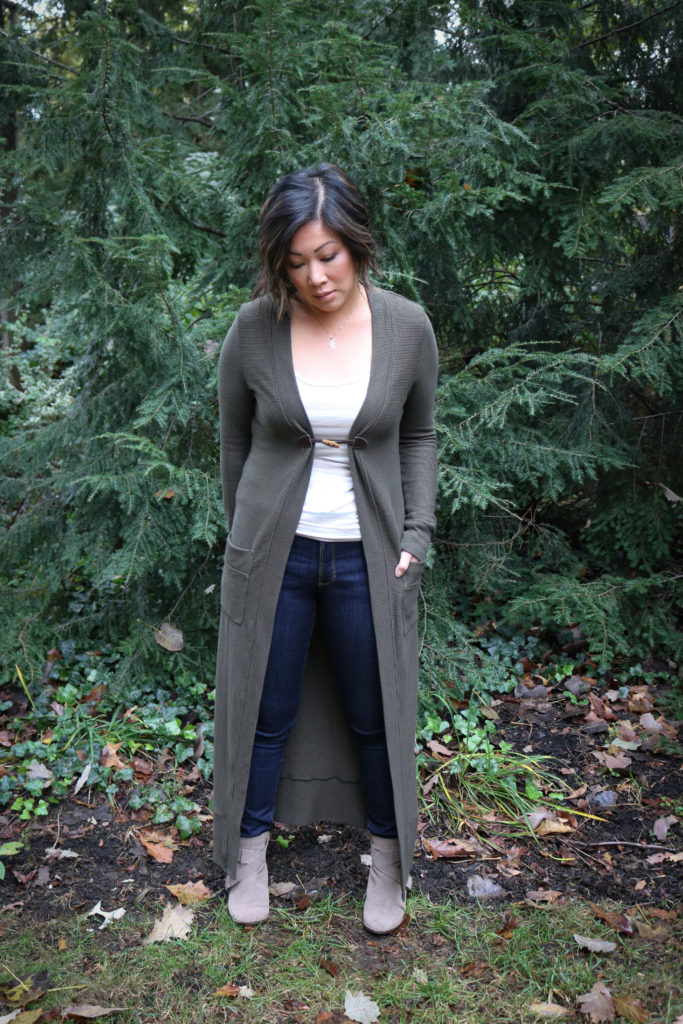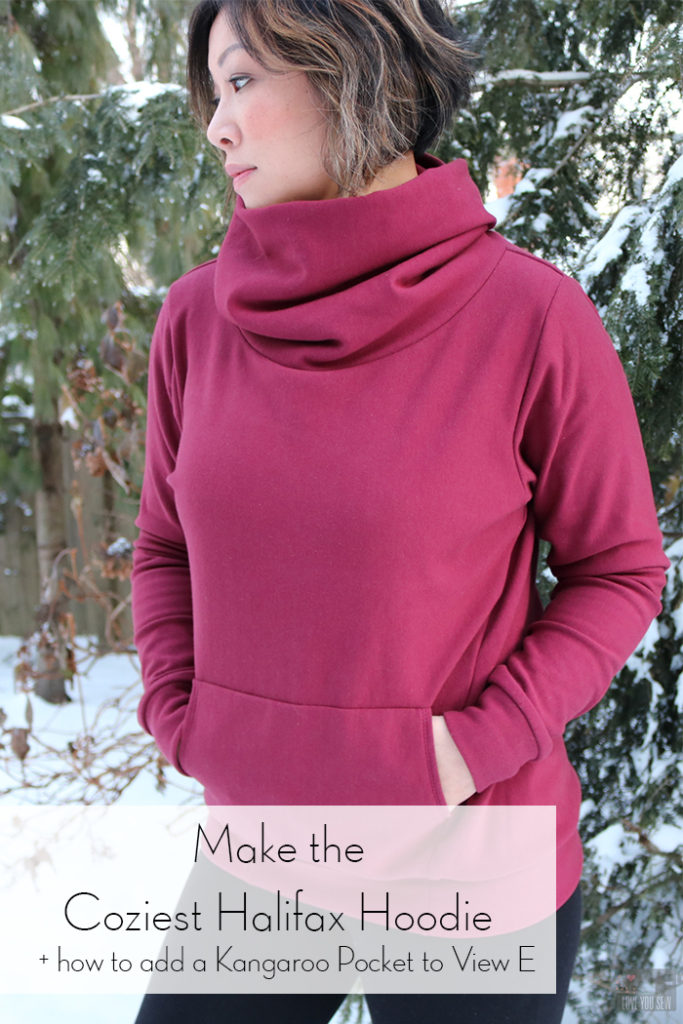
After the holidays, January is such a drag. Then, throw in the Polar Vortex that hit the Midwest this week and it’s just downright depressing. We can’t go anywhere, school had been cancelled two-days in a row, I can’t send the kids to go out and play….plus, it’s just so friggin’ COLD! I am thankful, however, to have made this Halifax Hoodie the other week. The plush softness of this fabric combined with a comfy cozy sweatshirt design is keeping me pretty warm through this cold spell.
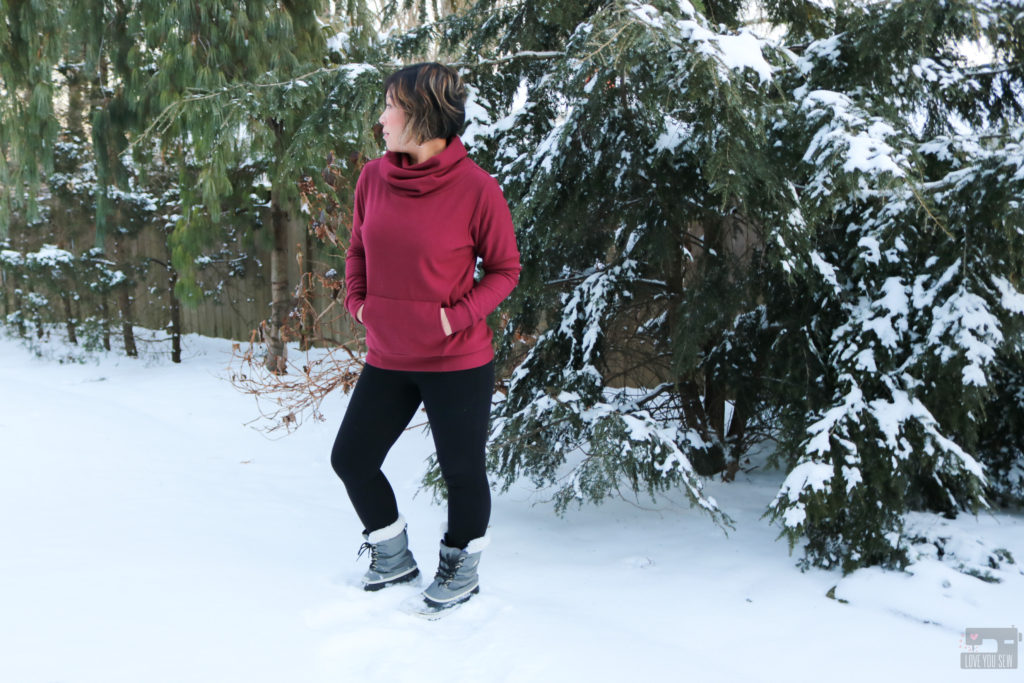
FABRIC:
I picked up this heavyweight bamboo/cotton sweatshirting in Heretic from Imagine Gnats. Right now, the shop carries a number of different colors of this fabric, as well as matching ribbing! When I bought my fabric, they were sold out of the ribbing (which was a bummer,) but the 25% four-way stretch in this sweatshirting is more than enough for the cuffs and waistband. I love how soft the fleeced inside of this fabric is from the bamboo…even after multiple washings.
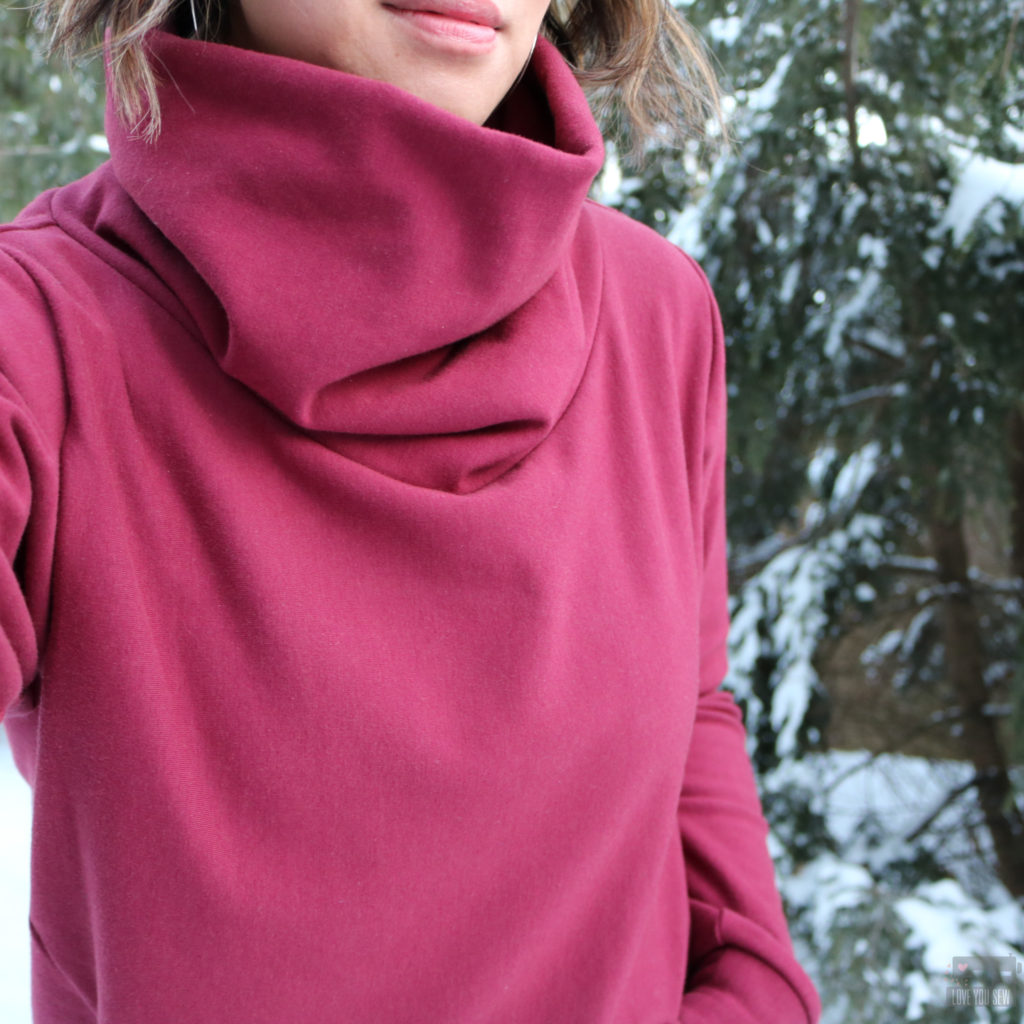
PATTERN:
The Halifax Hoodie by Hey June Handmade is a very popular pattern with it’s classic casual design and multiple features. This is a great pattern for knits and allows for so many different styles and combinations….whether you want a full zip-up hoodie or just a crew-neck sweatshirt.
I opted for View E with the angled side seams this awesome funnel neck. I’m a big fan of Lululemon athleisure-wear and they tend to have higher necks in many of their jackets and tops. I love this feature since I’m always cold and can’t say no to a built-in scarf 😉 I even raised the funned neck an additional 1.5″ on the fold (3″ overall,) to add even more of the cozy factor. The thickness of the sweatshirting helps the funnel neck stand up and provide volume. If you are using a regular weight knit, you may end up with more of a cowl look instead.
KANGAROO POCKET HACK:
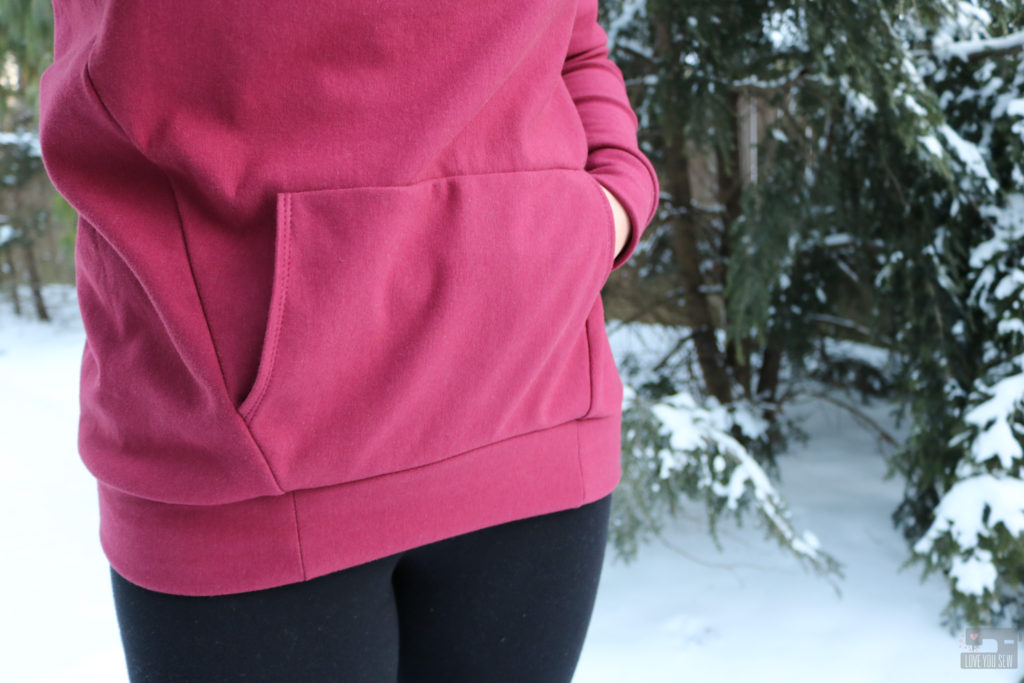
While the other views of the Halifax had pockets, View E did not. When I was planning this too, I just wanted the extended neck, but I happened to be wearing a regular crewneck sweatshirt while cutting out the pattern pieces. I realized how many times I was reaching for my stomach to warm up my hands, just like when I wear my hoodies. I decided I definitely needed a kangaroo pocket and you can follow how I made one below.
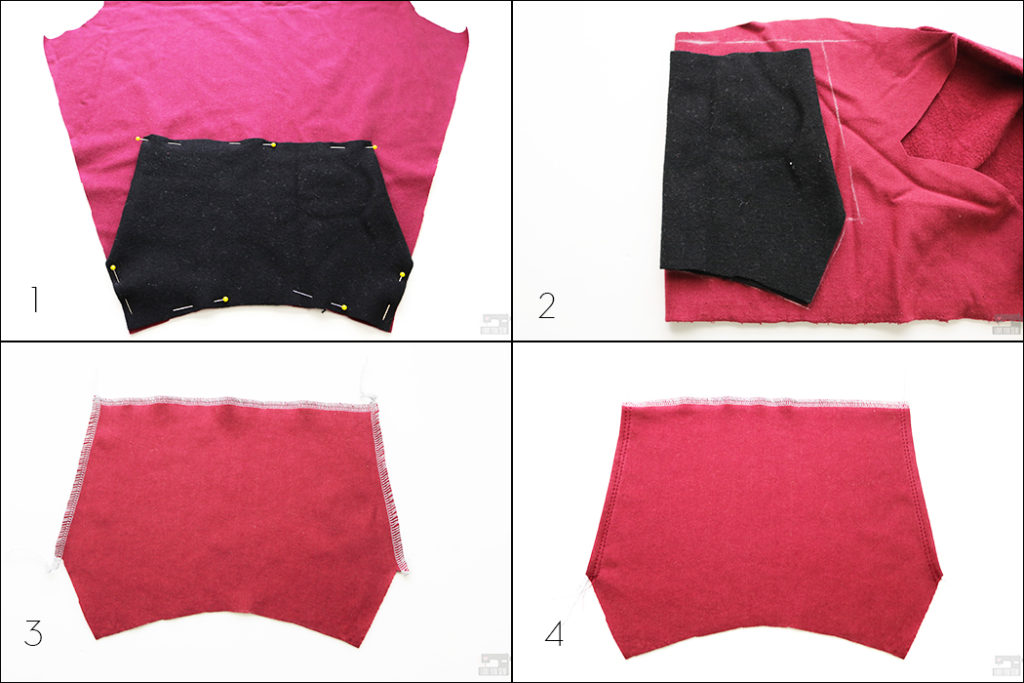
1. With the angled side seams. I wanted to make sure the pocket followed the same sharp lines and thus, didn’t use the pocket pattern included (which has rounded openings for the hands.) I used a scrap piece of knit fabric to create a new pocket. The scrap was laid down and I played with the sizing by folding the scrap until it looked right. I used my own hands to make sure the opening was big enough for me to easily access the pockets. Then I trimmed up the scrap to match the lines of the front sweatshirt hem and side seams.
2. Folding the new template in half, transfer the design to my fabric and added 1/2″ seam allowance at the top and side hand openings.
3. Open up the pocket and finish the top and side hand openings by serging or by using a zig-zag stitch.
4. Fold under the side pocket openings by 1/2″ and top-stitch. I stitched at 1/8″ and at 1/4″.
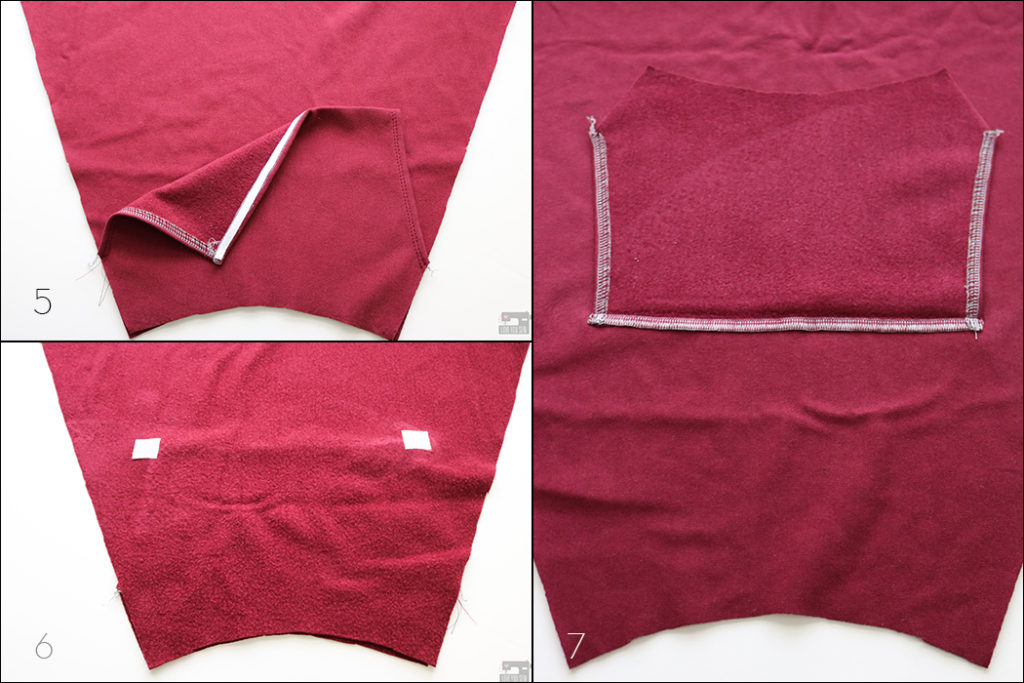
5. Press under the top of the pocket by 1/2″. Add some Wonder Tape along the seam allowance and remove the backing. Press the pocket into place centered on the front to prevent the pocket from shifting.
6. On the wrong side of the front, fuse small scrap pieces of interface at the top corners of the pocket. You can feel the corners through the fabric.
7. With the right side of the front facing up, flip up the pocket and sew along the top of the pocket. Backstitch well at the beginning and end
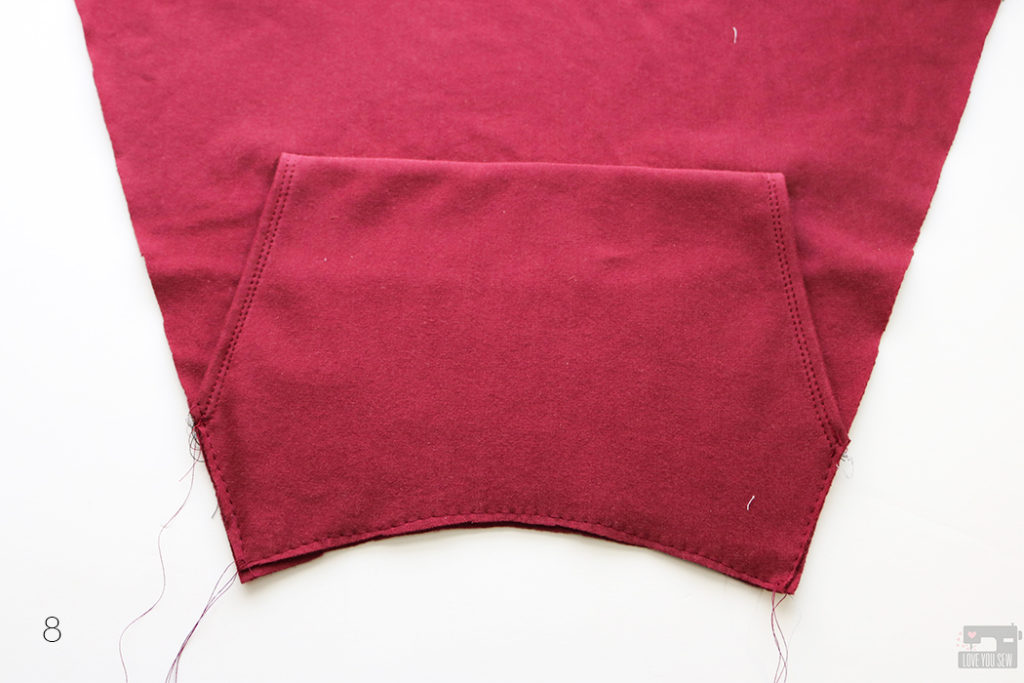
8. Flip the pocket back down and baste the sides and bottom of the pocket to the front. After I took these pictures, I went an extra step and tacked down the top corners of the pockets for extra strength.
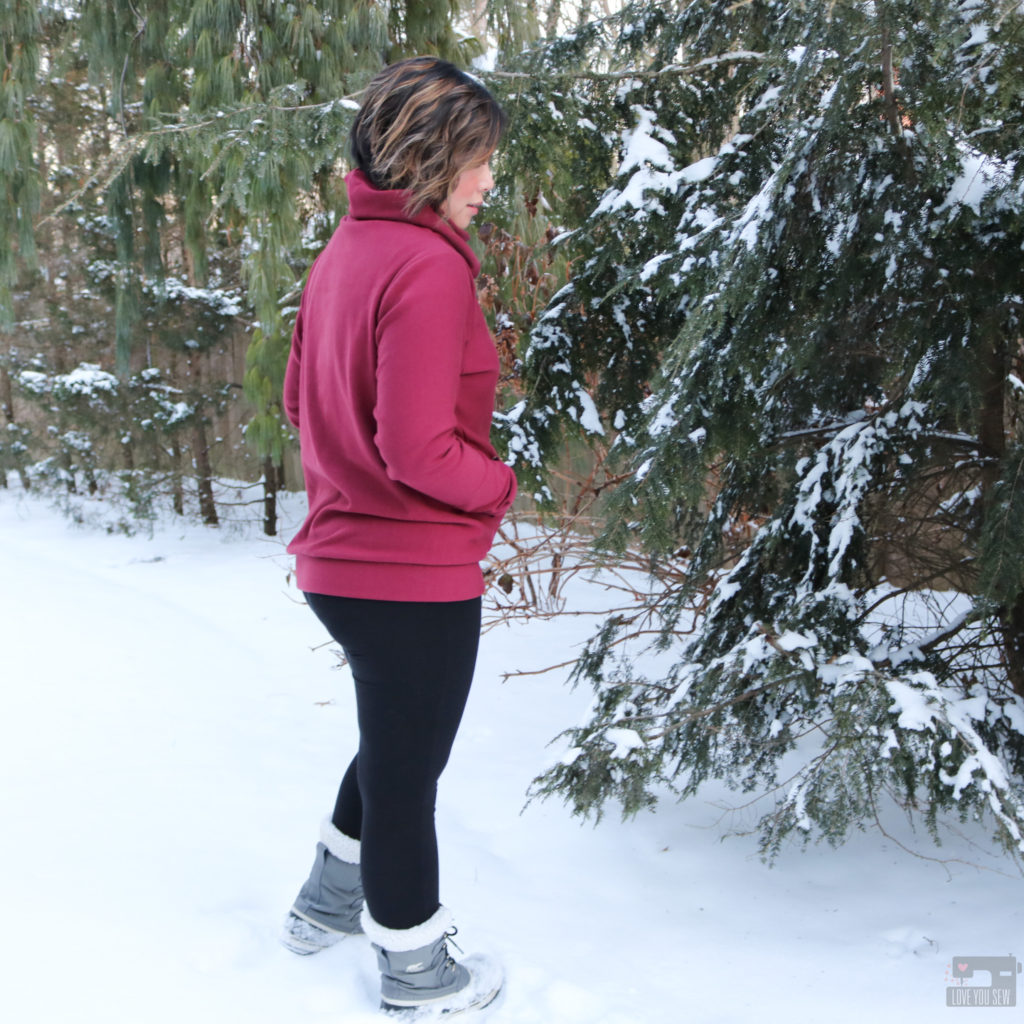
SIZING
I’m a 36″ bust, 40.5″ around the hips and made a straight medium. Being 5’3″, I usually have to make a sleeve length adjustment, but left it all the same to keep the slouch and ease. I love this generous fit and the stretch in this fabric allows for great movement. I probably won’t make any adjustments when I make my next Halifax.
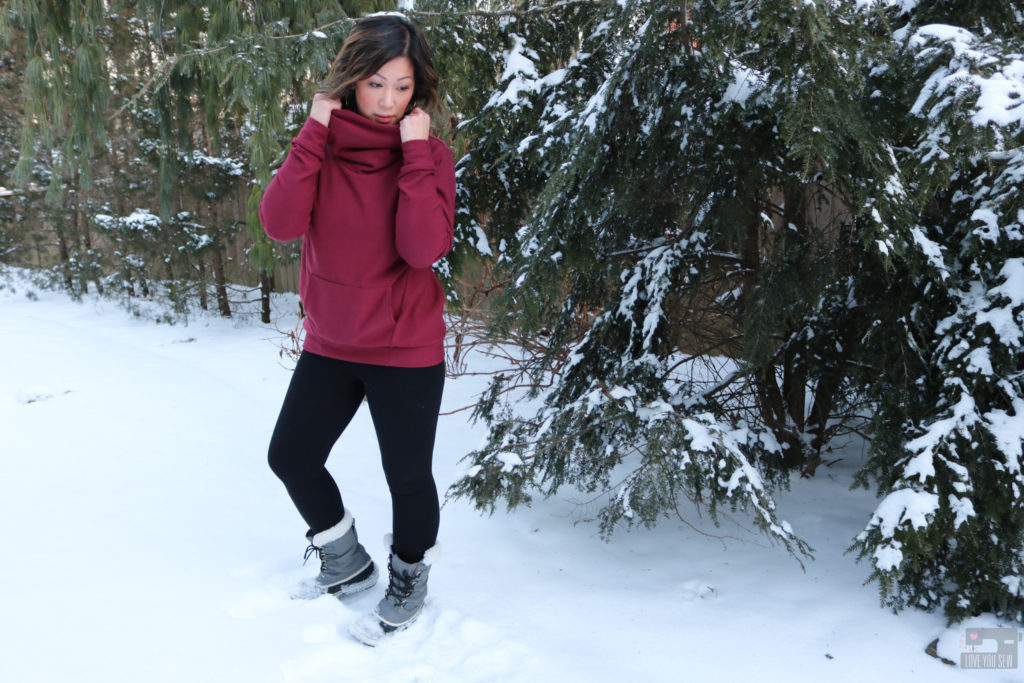
I hope you are all staying warm or have fled to warmer climates! In the meantime, I hope you checkout the Halifax Hoodie and this tutorial to add a pocket to View E.
Happy cold-weather sewing!
Cristy
